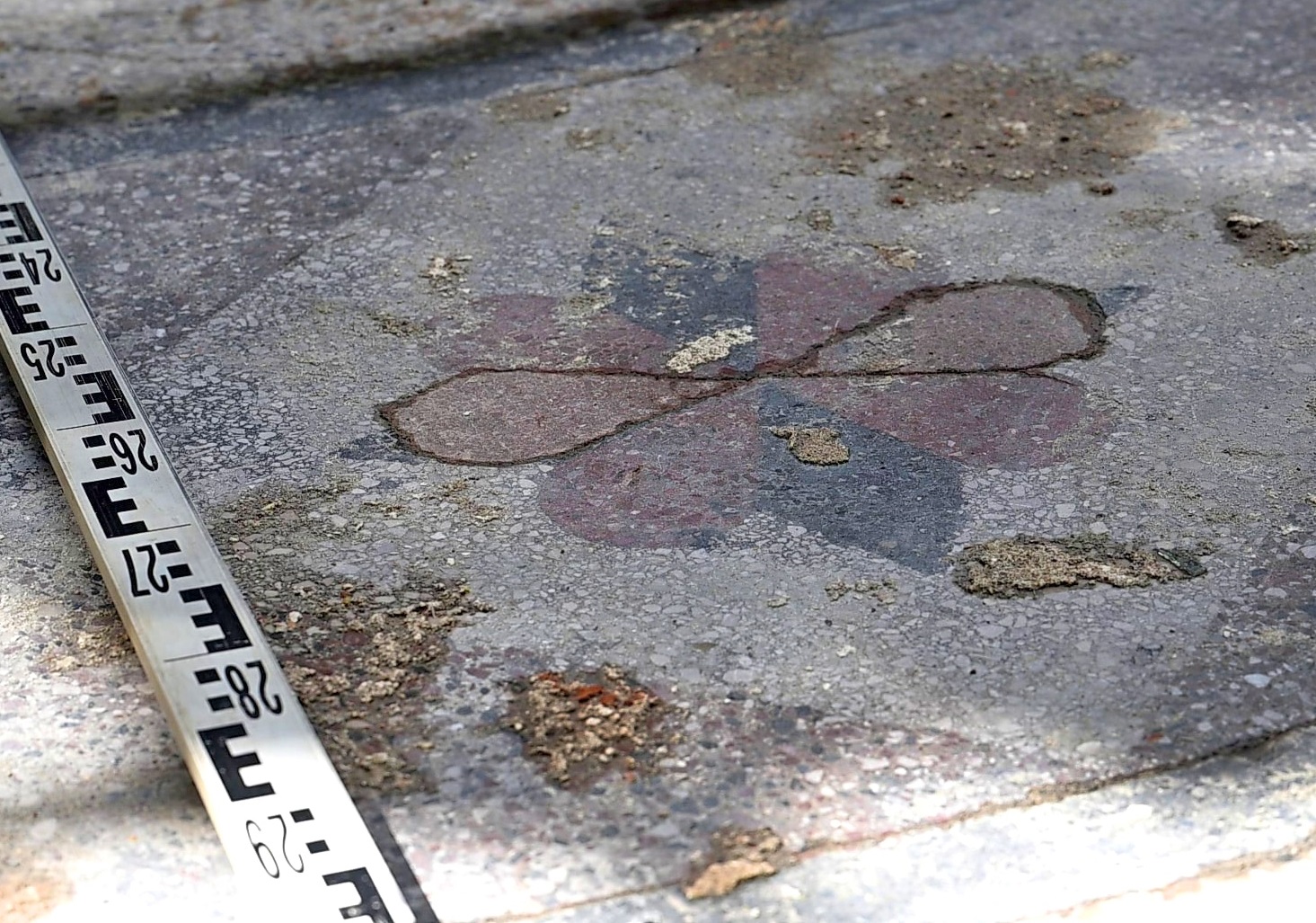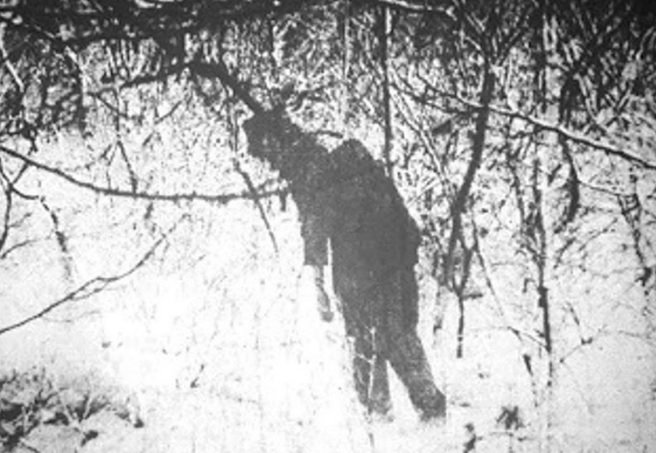Archaeology
1800-year-old ritual mask uncovered in Osaka Prefecture
In an announcement by the Osaka Centre for Cultural Heritage, archaeologists have uncovered an 1800-year-old ritual mask in the Osaka Prefecture, Japan.
The discovery was made during excavations to extend the Osaka Monorail in the city of Higashiōsaka, where the team found a mask hewn from a cedar tree with a representation of a human face.
The mask measures around 30cm in height by 18cm wide and features two eye holes, a mouth, and a perforated hole surviving on one side that probably held string for holding the mask on the wearers face.
The researchers suggest that the mask was used for ritual ceremonies during important agricultural festivals around 1800-years-ago during the Yayoi era. During this period, Japan transitioned to a settled agricultural society using agricultural methods that were introduced initially in the Kyushu region from Korea.
Distinguishing characteristics of the Yayoi period include the appearance of new Yayoi pottery styles, improved carpentry and architecture, and the start of an intensive rice agriculture in paddy fields.
The discovery is the third example of a wooden mask from this period and is similar to another mask found in the Makimuku ruins in the Nara Prefecture.
Kaoru Terasawa, director of the Research Centre for Makimukugaku, said: “I believe the mask represented a ‘spirit of a head,’ which was believed to be a god in the shape of a human and represented the authority of Okimi.”
The Okimi was the leader of the Yamato Kingship, a dominant political coalition comprising of influential clans based in what is now Nara Prefecture, which held sway from the third to the seventh century AD.
Excavations also revealed a wooden water bucket and a charred hoe-shaped wooden object in flood sediment 2.9 metres beneath the ground surface.
The mask will be displayed at the Museum of Yayoi Culture in Osaka Prefecture’s Izumi between April the 29th and May the 7th.
Header Image Credit : Osaka Centre for Cultural Heritage
Archaeology
Egypt’s first pyramid was constructed using hydraulic lift
A recent study, published in the journal ResearchGate, proposes that the Pyramid of Djoser could have been constructed using hydraulic lift.
The Pyramid of Djoser, also known as the Step Pyramid, is a proto-pyramid built as the final resting place of Djoser, the first or second pharaoh of Egypt’s 3rd Dynasty (2670–2650 BC) during the Old Kingdom period.
The pyramid rises from the Saqqara plateau in six steps to a height of around 60 to 62 metres, serving as the centre of a vast mortuary complex.
Due to the absence of authentic sources from the pyramid architects’ working sphere, there is currently no confirmed comprehensive model for the method used in the pyramid construction.
The prevailing theory suggests that the heavy stone blocks were transported on apparatuses such as rollers, and raised to height using a series of ramps.
In the study, a survey of watersheds near to the pyramid indicate that the Gisr el-Mudir (enclosure) has features of a check dam for trapping sediment and water. Furthermore, the topography beyond the “dam” shows a possible ephemeral lake west of the Djoser complex, and water flow inside the moat surrounding it.
The study authors explain: “In the southern section of the moat, we show that the monumental linear rock-cut structure consisting of successive, deep compartments, combines the technical requirements of a water treatment facility: a settling basin, a retention basin, and a purification system.”
Based on this finding, the study proposes that the Gisr el-Mudir and moat’s inner south section worked as a unified hydraulic system for regulating flow and improving water quality. In addition, the pyramid’s internal architecture is consistent with a hydraulic elevation mechanism never reported before.
“The ancient architects likely raised the stones from the pyramid centre in a volcano fashion using the sediment-free water from the Dry Moat’s south section. Ancient Egyptians are famous for their pioneering and mastery of hydraulics through canals for irrigation purposes and barges to transport huge stones. This work opens a new line of research: the use of hydraulic force to erect the massive structures built by Pharaohs,” said the study authors.
Please note: This study was submitted to PLOS ONE on December 7, 2023. After two rounds of review by peers, the paper was formally accepted by PLOS ONE on June 27, 2024. Since July 23, 2024, it has been the subject of new consultations and review by the PLOS ONE Editorial Board.
Header Image Credit : Shutterstock
Sources : ResearchGate | Piton, Guillaume. (2024). On the possible use of hydraulic force to assist with building the Step Pyramid of Saqqara. PLOS ONE.
This content was originally published on www.heritagedaily.com – © 2023 – HeritageDaily
Archaeology
Lost splendour of the Great Synagogue of Vilna rediscovered

Constructed between 1630 and 1633 in a Renaissance-Baroque style, the Great Synagogue of Vilnius served as the religious centre of a complex of synagogues, mikvahs, and community institutions devoted to Torah study in Vilnius, Lithuania.
According to a press statement by the Israel Antiquities Authority (IAA): “The Great Synagogue of Vilna was the beating heart of the Lithuanian Jewry, which included 12 synagogues and study houses, the community council building, the home of Rabbi Eliyahu – the Vilna Gaon, Kosher meat stalls, the famous ‘Strashun’ library, a bathhouse and more.”
During World War II, the synagogue was looted, burned, and partially destroyed by the Nazis in the holocaust. Soviet authorities completely demolished the remaining structure to build a school, intending to prevent any future restoration of Jewish worship.
Only three original pieces of the synagogue survived the destruction: a door of the Holy Ark, a reader’s desk, and a bas-relief with the Ten Commandments, which are now on display at the Vilna Gaon Jewish Museum.
Image Credit : Israel Antiquities Authority
In a recent study conducted by the IAA, the Association of Lithuanian Archaeology, the Good Will Foundation, and the Jewish Community of Lithuania, archaeologists have rediscovered traces of the synagogue’s decorated walls and remnants of flooring with red, black, and white floral patterns that paved the main hall.
Excavations also uncovered huge water reservoirs to feed halachically pure water to the mikva’ot, and one of the giant pillars that surrounded the Bimah (prayer platform).
Dr. Jon Seligman from the IAA and Justinas Rakas from the Lithuanian Archaeological Society, said: “The magnificent remains we are rediscovering bring back moments in the life of a lost vibrant community.”
Header Image Credit : Israel Antiquities Authority
Sources : IAA
This content was originally published on www.heritagedaily.com – © 2023 – HeritageDaily
-

 Ghosts2 years ago
Ghosts2 years agoZozo: The Ouija Board Demon
-

 Space2 years ago
Space2 years agoScientists claim to have found the answer what existed before the Universe
-

 Ghosts2 years ago
Ghosts2 years agoOld Coot of Mount Greylock
-
Archaeology1 year ago
New discoveries at Ekʼ Balam during conservation works
-

 General3 years ago
General3 years agoUC San Francisco engaging in horrifying experiments, organ harvesting of live babies in the name of “science”
